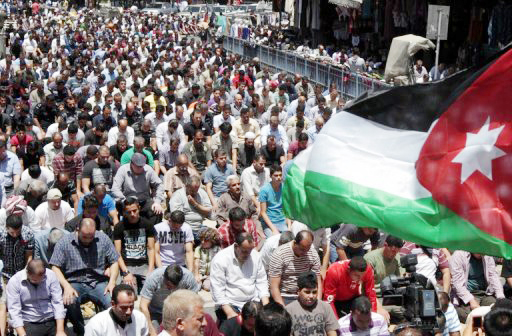JERUSALEM – Jerusalem is holy to three major monotheistic religions – Judaism, Christianity and Islam. Therein lies its unique glory.Therein lies its tragedy. For well over a millennium Jerusalem hasbeen a battleground, the scene of wars and terrible bloodshed inspired primarily by religious fervor, to which, in more recent times, has been added the single-minded ardor of nationalist aspiration. Thecity s numerous shrines, erected by Jews, Christians and Muslims, have in turn been desecrated and/or destroyed by adherents to rival faiths.
To many, the situation seems hopeless. Yet it may be precisely in the sanctity of the city in the theology of the different religions that a solution to the conflict could be found. Its origin lies in the city sgeography as this has developed over the centuries and particularly during the long period of Ottoman rule, from 1517 to 1917, during which both the Jewish and Muslim communities grew and were active,separate but (almost) equal.
By the time the British arrived in 1917 the city was a conglomerate of districts or neighborhoods, each with its distinctive character and most of them with a fairly, but not totally, homogeneous population. In the Old City, these included the Jewish Quarter, the Armenian Quarter, the Christian Quarter, theMuslim Quarter, a small Moorish Quarter and so on. Outside the Old City walls were, inter alia, a German Colony built by the Templars, a Greek Colony, an Italian Colony, an American Colony. The Jews spread out to the west and south; the Arabs to the north and east of the Old City. There are at present virtually no neighborhoods with a mixed population of Arabs and Jews. Every district has its own churches, mosques or synagogues.
When the British mandatory authorities appointed a municipal council, they (rightly) based representation on religious identity – two Muslims, two Christians, two Jews. Later this became an elected body, to which each of twelve constituencies, six Arab and six Jewish, each elected one counselor. The guiding principle of this mode of government was the conscious alignment of people s nationalities with specific areas of the city.
In November 1947, when the United Nations proposed a two-state partition of Palestine, it excluded Jerusalem from the division of the territory. Instead, it recommended that Jerusalem be a corpus separatum under UN auspices.
A combination of the UN proposal with the British model of municipal government could create a solution to the problem of Jerusalem – a solution which, if accepted and implemented in a spirit of mutual tolerance and goodwill, with full respect for the beliefs of the other and a readiness to forgo exclusive sovereignty in favor of constructive collaboration, might finally put an end to the enduringconflict. But this separate entity should not be under UN trusteeship, any more than the Vatican is. In fact, the Vatican s autonomy, its sovereign status, could well be our model.
Jerusalem is still composed of neighborhoods that are fairly homogeneous in terms of ethnic origin and background, countries of origin and religious practice. It would not be difficult to establishtwelve or more constituencies, each of which would be autonomous and responsible for certain aspects of the lives of its residents. Each of the neighborhoods or boroughs would send elected representatives to a central municipal council, which would be responsible for all matters relating to the city as a whole (transportation, town planning, sanitation, municipal parks, etc.). Separateness need not result in alienation; equality can produce fruitful cooperation and collaboration.
All this applies to Greater Jerusalem. The Old City requires a solution of its own and that could well be found in an in parvo version of the neighborhood council, one based on equal representation of each and every one of the religious denominations that reside within its walls, who would join together to propose a just distribution of space and to determine the times of day, of the week, of the year when each of the holy places would be accessible to each of the various religions and sects that at present lay exclusive claim to the holy sites of their respective faiths. A Jerusalem Inter-Religious Council would be mandated to determine such a modus vivendi and, thereafter, with ensuring its observance by all concerned.
Some kind of external moderating mediation may be necessary to ensure fair play and equity; but that is a far cry from the internationalization proposed in 1947. Jerusalem should be autonomous,self-regulatory, self-governing, with no outside intervention by religious authorities outside the city. Not the functionaries of the various religions, but the common folk, the practitioners, should bein charge. This would also give a voice to women, who are currently silenced in virtually all of the religions. Jerusalemites and only Jerusalemites must develop their own separate peace. They must fully internalize the truth of W. H. Auden s famous imperative We must love one another or die.
Alice Shalviis a feminist and social activist who has lived in Jerusalem since 1949. This article is distributed by the Common Ground News Service (CGNews) and can be accessed at www.commongroundnews.org.





